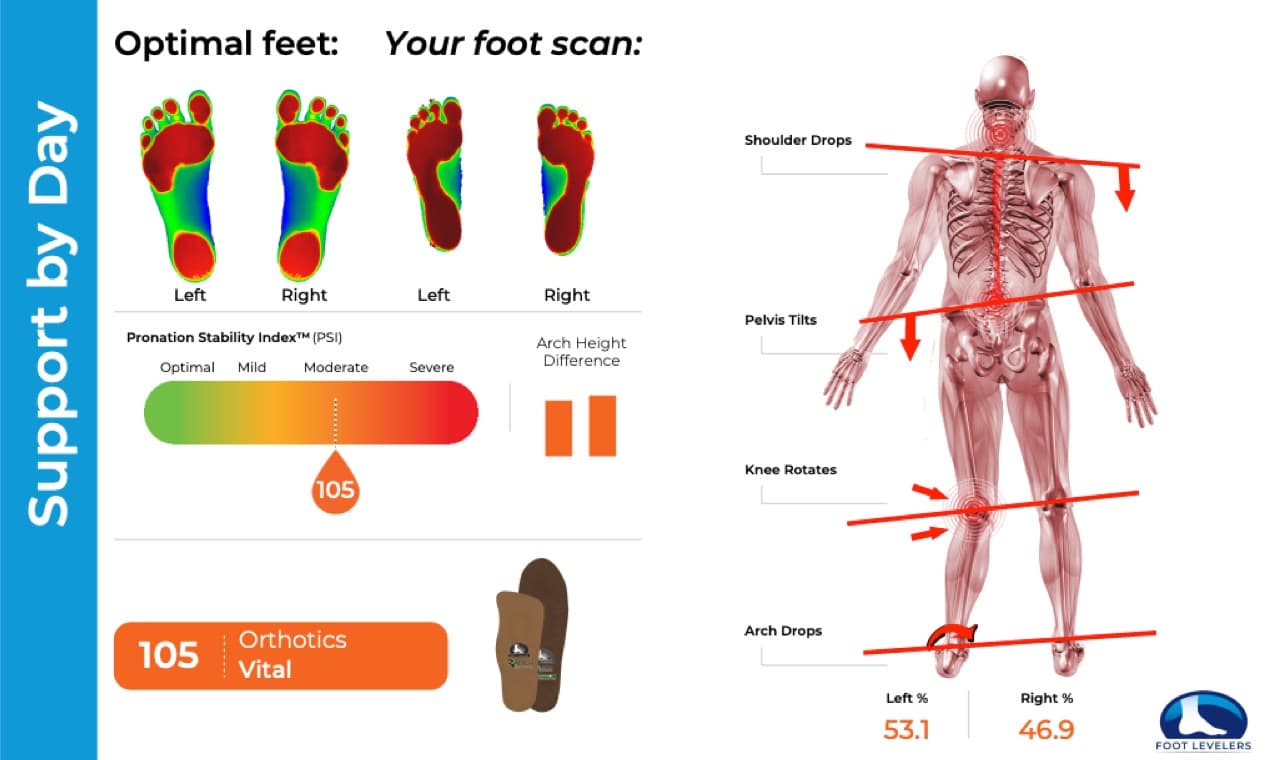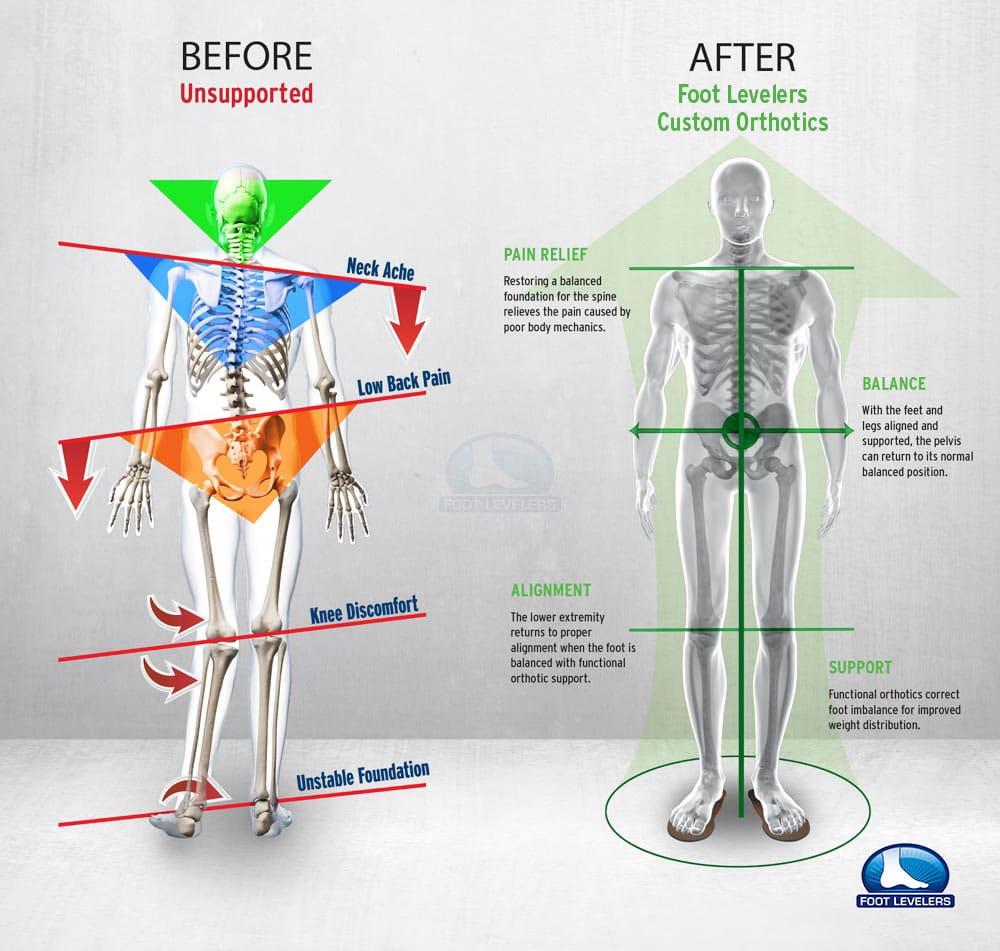
Don’t ignore your humble feet, your feet are your foundation. They may be at the bottom of your body, but they provide the support for your entire body, provide shock absorption, and give you the spring in your step–even while getting you from Point A to Point B. Don’t ignore them! Treat them well so they can do their job.
The foot has 26 bones–all adjustable by a chiropractor, no less! Many ligaments hold the aforementioned 26 bones together and provide incredible stability not only to the foot but effectively to the body, as well. In addition, multiple muscles (over 20) give the foot its shape and enable its movement.
There are three arches in the foot, which work to bear the weight of your body, provide shock absorption and flexibility. First, the lateral arch runs around the outside of the foot from the heel to the pinky toe. Next, there’s the transverse arch, which runs along the balls of the foot. Finally, the medial arch is on the inside of the foot and runs from the heel to the big toe–this is the arch that most people think of first when describing foot arches.

There are three primary ways feet function with our body: in walking (propulsion), in standing (balance), and in lessening the damage to the body when coming in contact with hard surfaces while walking (shock absorption).
Propulsion: When the foot comes in contact with the ground, the center of the body’s gravity moves from the heel to the toe, and the foot goes from absorbing shock to propelling the body through becoming a rigid sort of lever, creating enough force to push the body forward.
Balance: Your toes provide a significant amount of balance when standing or walking, in addition to the nerve receptors in your feet that tell our brains where (in space) our feet are–and whether or not they are balanced.
Shock Absorption: Feet provide shock absorption in three ways–through pronation (or turning of the foot inward), transverse arch flattening, and through toes splaying apart. The foot distributes the impact through all of these movements and helps keep our bodies moving along comfortably.
When our feet become unstable, it becomes more difficult to walk without pain, or we have pain after walking or running because of lack of support.
Because feet are constantly under so much pressure and weight, fallen arches may develop over time if a patient has poor biomechanics. Other causes for fallen arches (or flat feet) are the previous injury that may weaken ligaments or muscles, pregnancy can loosen ligaments and flatten arches due to extra weight, or excessive body weight can cause the foot to flatten to better support the body. In addition, some people have congenital flat feet, which means they never developed an appropriate arch as children. As a result, flat feet or fallen arches can cause plantar fasciitis, bunions, heel pain, Achilles tendon pain, or even painful bone spurs around the ankle bones.
When feet are in pain, they can cause even more problems with the rest of your body. When the foot has pain, it can impact the function of the kinetic chain. The kinetic chain is how the body parts are connected and work together (think of the song “the foot bone’s connected to the knee bone, the knee bone’s connected to the hip bone..”). This can lead to knee pain, hip pain, back pain, shoulder pain, or neck pain. Everything is connected. For example, if the foot arch falls, it can cause rotation of the knee, leading to uneven pelvis and hips, which can cause your shoulder to be out of alignment.

There are three excellent ways to keep your feet stable.
At Element Chiropractic, we use Foot Levelers custom-made orthotics that support all three-foot arches–not just the one. These custom-made orthotics still provide flexibility (they’re not rigid!) so they allow your foot to move and to stretch naturally, to keep them in good health, safely. Even if your foot seems healthy, getting a scan can prevent a small problem from getting worse.
Get scanned today with our Foot Levelers Scanner to see how your feet are really doing. After your scan, you can get custom-made orthotics in days! Orthotics are available for children, pregnant women, and all adults. While you’re at our offices, make time to get adjusted as well. We want to make sure every one of those 26 bones are in optimal alignment!
Copyright @2025 Element Chiropractic — 875 SW Rimrock Way Suite 103, Redmond, OR 97756